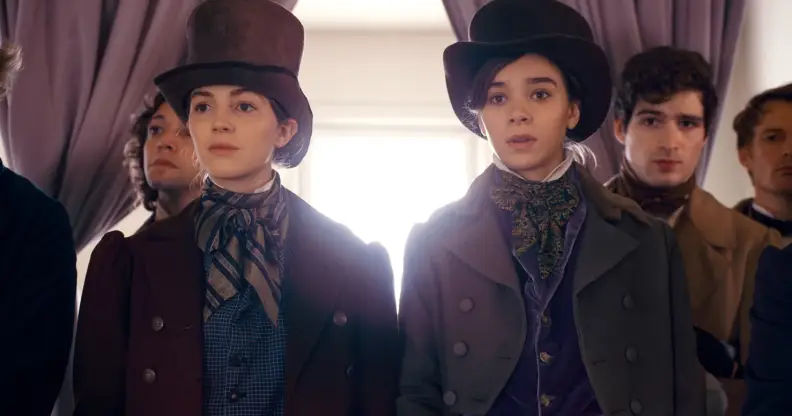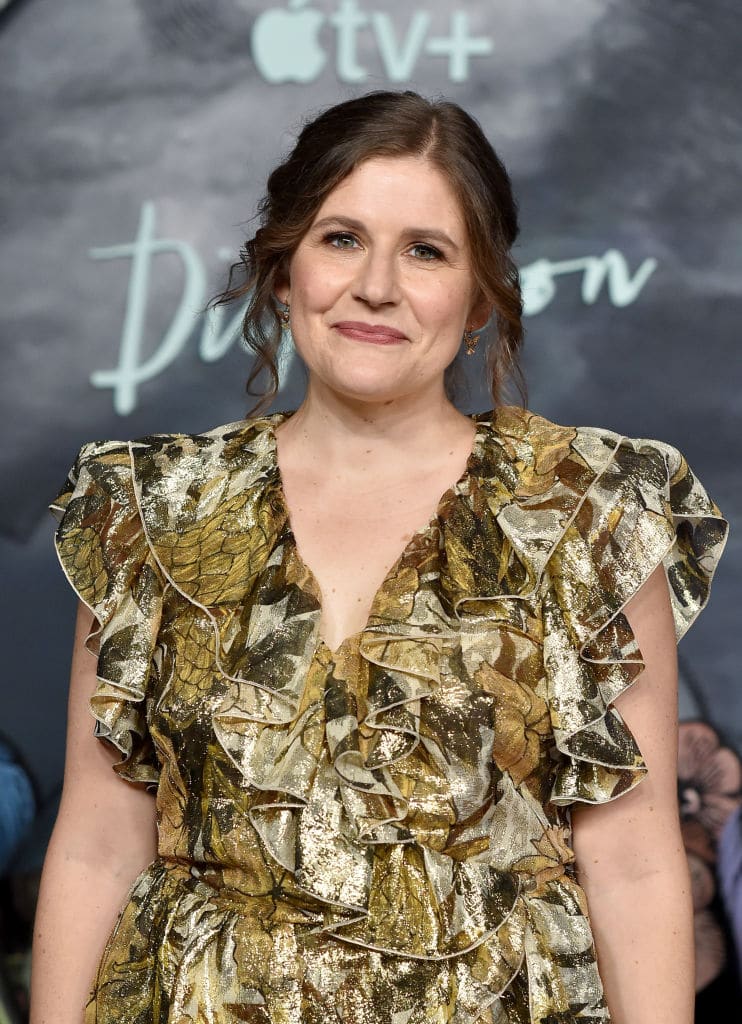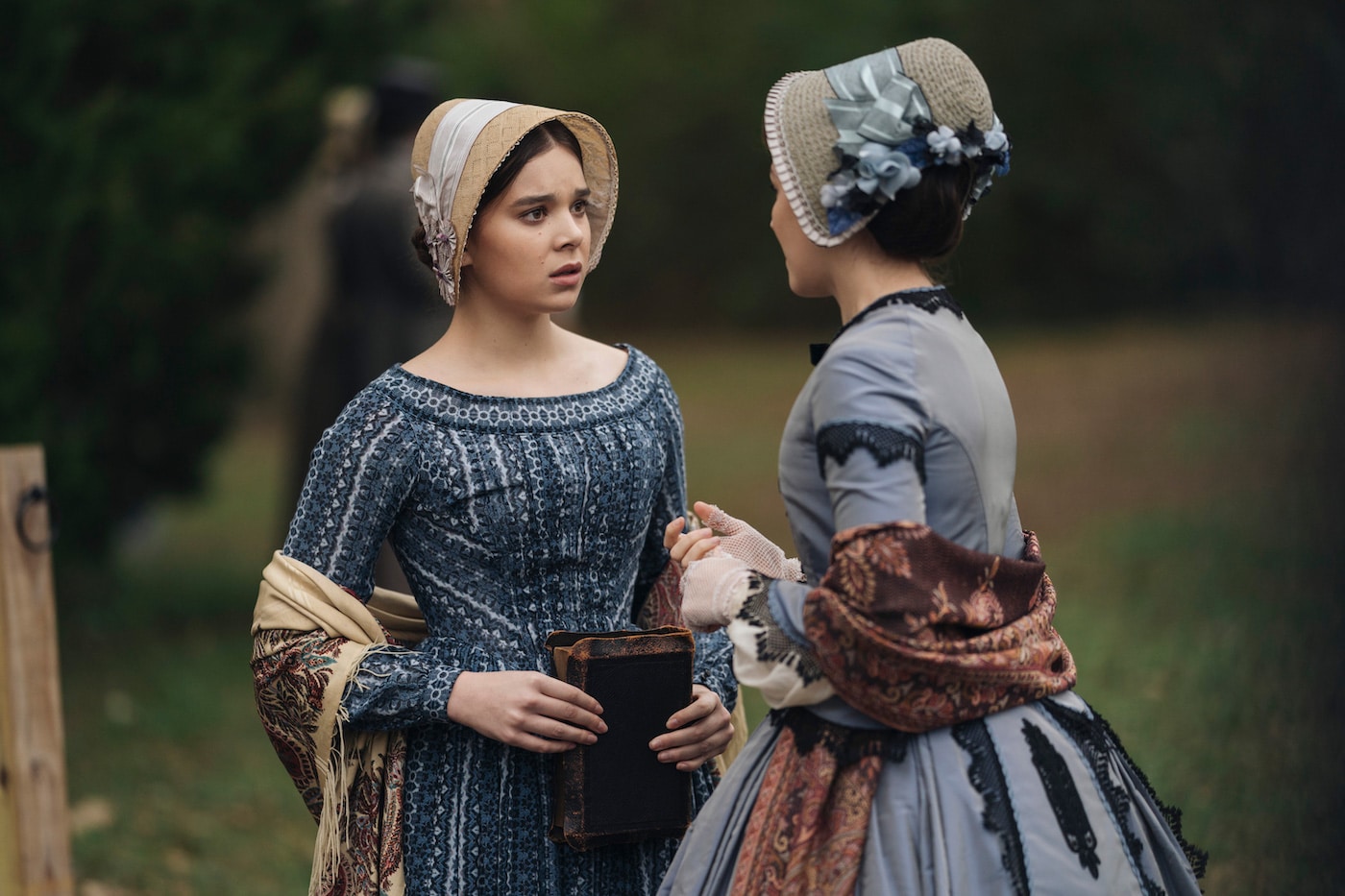Dickinson’s final season is about Emily ‘owning her queerness’, says creator Alena Smith

Dickinson has won praise for its empowering exploration of Emily Dickinson’s sexuality – but its third and final season takes queerness to new heights.
The Apple TV+ series quickly amassed a loyal LGBT+ following when it debuted on the streaming platform in 2019. At the heart of the show is the relationship between Emily (Hailee Steinfeld) and Sue (Ella Hunt). Over the course of the show’s three seasons, their love for each other ebbs and flows – and Emily’s deep feelings for Sue help inform and inspire her poetry.
“One of the ways in which season three goes farther than other seasons is specifically in terms of [Emily’s queerness],” Dickinson showrunner and creator Alena Smith tells PinkNews.
“In previous seasons we might have been comfortable saying: ‘Oh, Emily, she didn’t really have words to define her sexuality so she was kind of fluid, she was kind of poly,’ and seeing that as a way of reflecting where some young people are today. But I think in season three, we sort of said: ‘Enough of that. She needs to really start owning the fact that she is queer and that she is in love with Sue.’
“That becomes a central part of Emily’s journey in season three – she’s really taking ownership of her identity in a whole new way.”
PinkNews speaks to Alena Smith about how the COVID-19 pandemic shaped the third season of Dickinson – and she explains why she was so eager to reappraise the life and work of Emily Dickinson for audiences today.
How do you feel knowing this is the last season of Dickinson? I imagine it’s a bit of an emotional rollercoaster.
It’s more like a really joyful, emotional landing place after a long rollercoaster. From the beginning I envisioned this as a three-season series. I wanted to reimagine and re-contextualise the coming-of-age story, or the origin story, of one of America’s greatest female artists, to use that figure of Emily Dickinson and her work to reflect in some unexpected, perhaps unsettling, perhaps hilarious, strange, moving ways where we are as a culture and as a society today.
I always was aiming at season three as being the Civil War season. The part that I didn’t know and didn’t anticipate is that we would be writing and producing the entire season in COVID which definitely added a whole other layer of depth and meaning to the entire experience. I feel so fortunate that Apple and Hailee and our entire amazing team went through this journey with me and were able to form a community of passionate, committed artists that are really asking the same question Emily is in season three, which is: ‘Can art make a difference? Can art help a society in pain?’
My only hope is that there is some comfort offered by this season to everyone out there around the globe who’s been dealing with so much stuff that’s been pretty hard.
Grief is such an overarching theme throughout this season and death is very present throughout the show. Did that arise naturally?
Obviously the Civil War, it was a time when death started happening on such a mass scale, and also death started happening anonymously – young men would go off and die on the battlefield away from home, whereas previously death had been a domestic, intimate affair. A dying person would have been tended to by the women of the household and now you have a healthy young man who’s been shot and his corpse is lying on a battlefield somewhere, and maybe people don’t even know his name because the record keeping wasn’t great and organised in that time.
Everything that happens in Dickinson is rooted in some kind of historical or biographical detail, but again, my motto is: ‘If it’s not about today, it doesn’t belong in the show.’ And so I would only be picking up this theme of grief and death and trauma because it is relevant to what particularly young people are living through in our society today. I would even go all the way out to climate change and say that young people today live with a very intimate awareness that life is not permanent, and what does that mean to carry that with you?
View this post on Instagram
Emily Dickinson wrote thousands of poems about death. She was obsessed with it, she was surrounded by it. For her, it was a way into the paradox of life, and I think that’s why from the beginning the show had a character who is death, but also, that character, in the pilot of the show warns Emily, ‘There’s a war coming,’ and we get there in season three to the war he was talking about.
The depiction of the Civil War is really moving – were there any sensitivities you had to think about when writing that?
Absolutely, we are living in a moment when Confederate monuments are being fought about and torn down because of what they mean to people right now in the present. This is a perfect example of the ways in which history is present, which is kind of the meaning of the show. This stuff might feel like it’s old, but it’s all still with us. The present is haunted by the past. And in America, that is centrally an issue about race and relationships that are so broken in this country. And to approach that subject can be, and has to be, extremely scary, but it’s really important that we talk about it and ask questions.
I certainly don’t feel like I have any of the answers, but I feel so lucky and fortune that I was able to recruit a community of people that could come together and ask those questions together, as painful as they are. I hope the audience will also feel part of that conversation.
Dickinson also really challenges the outdated stories we hear about Emily Dickinson. Why was that important for you?
I’s always this thing of: the past isn’t as far away as we think. Up until almost when this show came out a few years ago, the default notion of Emily Dickinson was a depressed recluse who never experienced love or passion and moped around a lot. And my show was inspired in part by the profound work of Dickinson scholars who have studied her and said, ‘No, none of that is true. We need to break open this whole myth and get to know the truth of this woman who was so committed to her own voice that she carved out one of the greatest bodies of work in the English language. One that continues to trouble and provoke and amaze and dazzle us today.’ It’s flipping the script in terms of Emily as a sad victim versus Emily as a powerful force of nature. And that’s really how I see her. That’s how I feel Hailee has portrayed her so beautifully in the show.
The show also explores the sexism Emily faced in her everyday life – was it important to you to explore that?
That’s probably the jumping off point of the entire series, the idea that we’re looking at this truly exceptional woman alive in a moment when women have hardly any rights or agency as individuals. This whole coming of age story that we’ve told about Emily Dickinson over these three seasons is Emily’s fight to be given the power that she rightfully deserves as a female creator. I think in some ways you could put this in a gothic genre because I think the experience of being a woman is a gothic experience, and it remains so even today. So that’s definitely relatable.
The first three episodes of Dickinson season three are out now on Apple TV+.
For more, read PinkNews‘ interview with Jane Krakowski, who plays Mrs Dickinson.



